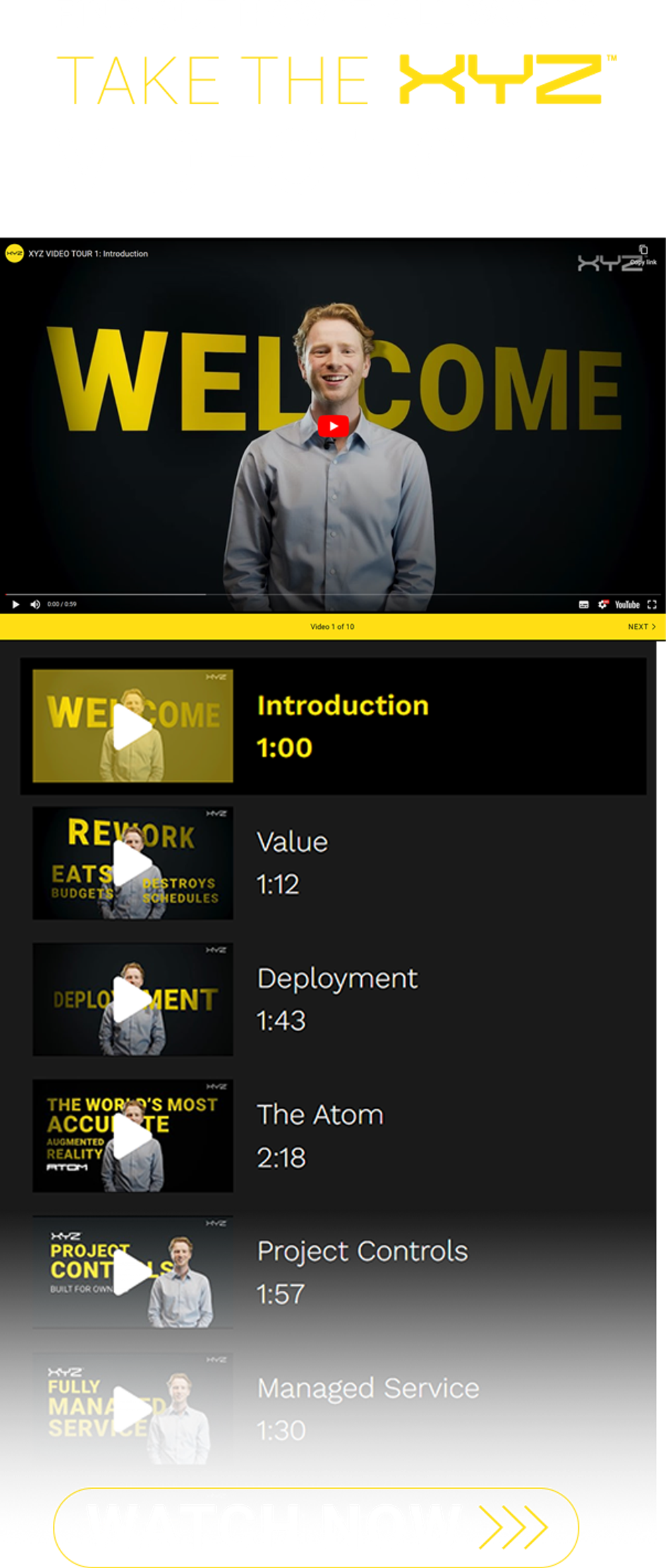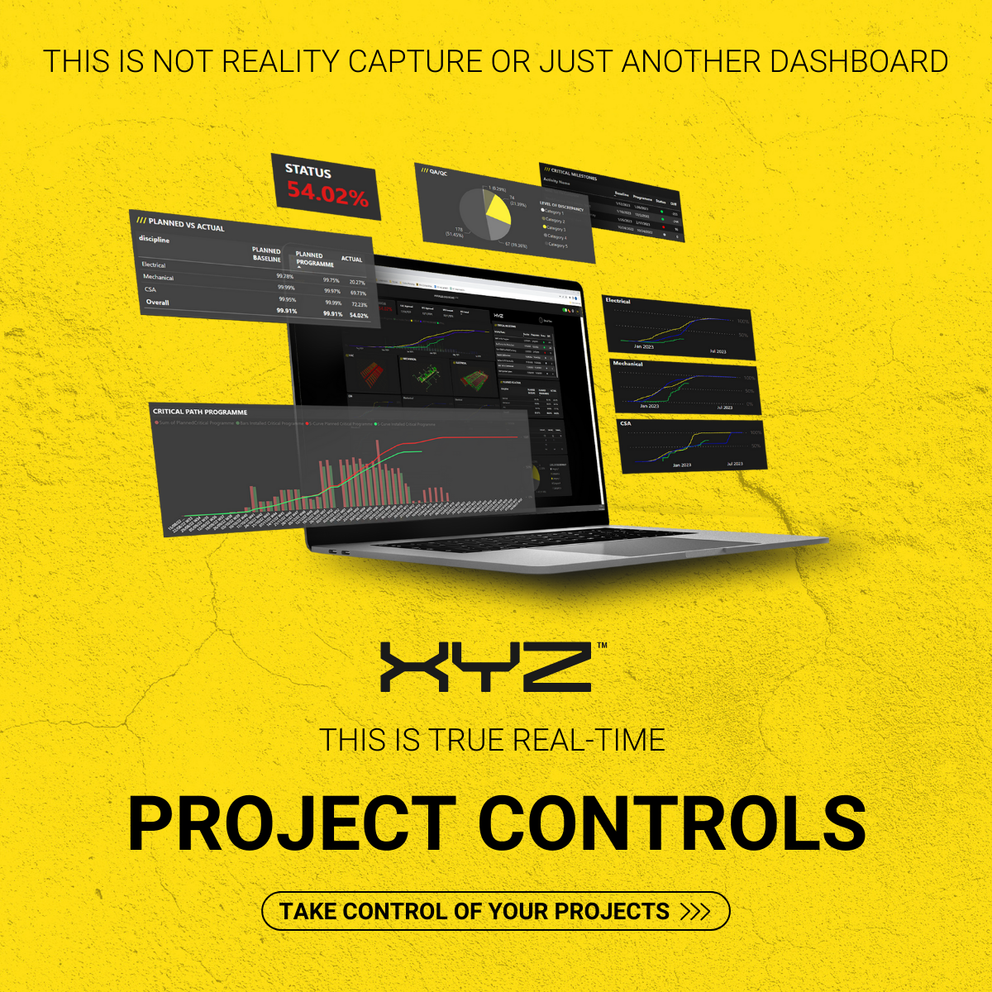-
Services
Services
Find out how we work with our clients and deliver value to construction projects from day one
-
Solutions
Solutions
Discover how all our solutions sync together to deliver construction's most powerful BIM platform to date
-
Built for
Built for
-
Industry
Industry
Understand how we support construction's biggest sectors, and hear from our clients who have experienced the power of XYZ
-
Resources
Resources
Get stuck into all our latest thought leadership, news, reports and industry leading content
-
Company
Company
Dive into what makes XYZ tick, unearth why construction is in our DNA and why we are world leaders in AR solutions

Insights
What’s Wrong with AI in Construction?

12 September 2024
Artificial Intelligence is the latest in a long line of tech buzzwords that aims to change the construction technology (ConTech) space.
Over the past 20+ years, many such buzzwords have come and gone, with varying degrees of impact. However, it's becoming increasingly clear that AI has distinguished itself as more than just a passing trend.
The capabilities it has already displayed - most notably with the release of Large Language Models (LLMs) such as the GPTs, LLaMa and Gemini, as well as visual models such as MidJourney and Sora - have made people in every industry sit up and take notice. As a result, many are now eager to integrate AI-powered features into their own products.
The technology itself, however, is not yet advanced enough to have the widespread impact that many of these companies will be hoping for. Yet, in a rush to stay on trend and appear cutting-edge, many in the ConTech space are hastily adding AI capabilities to their portfolios - despite not offering any truly game-changing solutions.
This is a serious concern. AI has faced numerous “winters” in the past, during which research ground to a halt, due to a lack of belief in its utility. With the substantial funding AI has received this decade, another winter would be catastrophic.
Avoiding this scenario is paramount right now, but with such a buzz around AI, how can ConTech deliver on the promises of a brighter, AI-powered future?
A waste of intelligence
The construction industry has many processes that appear, on the surface, to be automatable. For example, linking elements in the schedule to the corresponding elements in the model. The time-consuming but necessary process to manually link each element is just the kind you would want to automate. Several ConTech companies promise 100% automated linking, but these solutions often fall short. Automating such complex processes frequently leads to errors that will go unnoticed without human intervention, undermining the entire automation process. Even worse, if these issues are not detected, they can result in significant financial losses and extensive time-consuming fixes.
Other ConTech companies have taken to integrating construction-specific chatbots into their systems to answer questions relating to their projects. To be blunt, it is too early to have developed something actually useful independently. These chatbots generally fall into two categories:
1. Independent, shallow chatbots:
These offer only surface-level insights and resemble early-2000s AI in their capabilities. They are limited to handling very basic queries without providing deep or actionable responses (think Microsoft’s ‘Clippy’). These have some practical uses, most obviously in customer service industries, but in construction they fall completely flat due to a complete lack of depth.
2. ChatGPT Lookalikes:
These are essentially rebranded versions of ChatGPT, often with minimal customization. At best, they might include basic prompt engineering, such as instructing ChatGPT to “answer this question as if you were a construction expert.” While these may initially seem sophisticated, they typically reveal themselves to be superficial upon closer inspection. Worse still, such bots hallucinate frequently, which is dangerous for business operations and reputation.
In both cases, current chatbot solutions fall short of delivering the nuanced and practical assistance needed in the construction industry. While these look great in demos, they often fail to solve real world problems. This erodes trust in AI and its capabilities and pollutes the construction AI landscape, depriving the industry of innovative ways to effectively leverage AI.
The ugly side of AI
These examples of AI are damaging, but they do not compare to the darker side of how AI is applied in construction.
Many companies offer full reality capture on their projects through daily or weekly photographs. To make the information from this actionable, some will adopt “AI” that will inform the user of actionable information pertaining to each photo, such as progress tracking, issue detection and matching elements to the model.
Automating this entire process is, as of right now, not possible. Even cutting-edge AI models - the ones Big Tech are currently spending billions of dollars to develop - would return an error-rate far too high to be satisfactory, and these companies are unlikely to have access to such models.
So how are they achieving this incredible result?
A while ago, you may recall a global consumer company (who I will not name) that claimed to be using AI for a similar purpose, only applied to the retail industry. News broke that the supposed “AI” that these companies were using was, in fact, warehouses of people in the third world doing the work that AI was supposedly doing.
This was one of the world-leaders in AI development. If they were not able to build an AI capable of this, what are the chances a ConTech startup was able to beat them to it?
These companies are likely employing the same strategy. There are numerous reasons why this is a bad thing, but it is not my place to comment on the morality of such a decision. What I can say is that this is certainly a bad look for AI as an industry. People are already skeptical of AI for various reasons, and this only reinforces the perception that it is just a magic trick of smoke and mirrors. When the façade inevitably falls away, it risks undermining trust in the genuine value that AI can provide.
When AI had gone into its winters in the past, it was due to a lack of faith in the technology. I can think of nothing that would lead us to another one faster than this sort of “AI” solution.
How to build a real AI with what we have today
AI is a magnificent tool, even in its current form, so why are these companies failing to use it so monumentally? Simply, there is a lack of strategy and/or construction expertise around when building it. To build an AI solution that impresses board members in a demo is one thing, impressing construction experts is another.
If a construction expert were to use, say, the AI that automates linking onsite, they would quickly realize that it throws up too many errors to be useable. The same goes for chatbots that link to ChatGPT. And while people working in warehouses do provide value, they cannot be classed as an “AI solution” for obvious reasons.
The solution is having a strong strategy from the start and ensuring a construction expert has consistent oversight. AI is good at doing simple tasks very quickly, but it cannot be used to replace humans.
The key is identifying an area in which the unique skillset of AI could take the lift of workers who are already at capacity (in construction, this covers just about everyone). Building an AI model that automates part of their task gives them more flexibility and increases their capacity, making every worker more efficient and less overworked.
Model and schedule linking, for example, cannot be entirely automated, but it can be partly automated. AI can return a confidence value between 0 and 100% with each prediction, and by only using predictions with high confidence (say 70% and above), it speeds up the process by giving more time to the agent/workers (who would do this work), to focus on other tasks. It is not a replacement, but an assistant.
Having a construction expert that works closely with the AI team is also vital. They will be able to call bullshit when they see something that would not work in the field, a task that your average software engineer would have a very hard time doing. This ensures that the end-product can deliver real value as soon as it is deployed, rather than after a lengthy testing phase or, worse still, not at all.
Outpacing the Hype Cycle
The hype cycle of any new piece of tech is a tale often told, and AI is no different. An initial period of overinvestment will inevitably lead to a crash, followed by a slow comeback as people learn how it can provide real value. This has happened with every modern innovation, from the internet to trains, and AI will likely follow a similar pattern. If it does, beating the curve is vital, as this event will separate the wheat from the chaff.
AI has the potential to change every industry, and construction is no exception. However, some “AI" products are either Anonymous Individuals in warehouses, or thin wrappers over the GPTs. This type of solution will only damage the AI industry. Trust in AI is already low, and it must be built up through genuine advancements. Taking the easy route will only increase the likelihood of another AI winter, or at least decreased adoption. Given the immense value that AI can bring to the construction industry, allowing this opportunity to slip by would be a monumental failure on the part of the ConTech industry.
If you want to learn more about how AI is impacting XYZ, watch my interview here.







